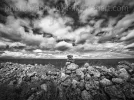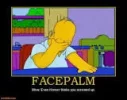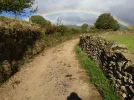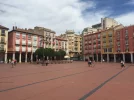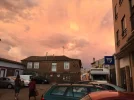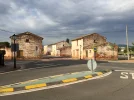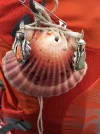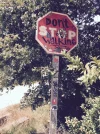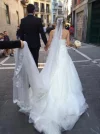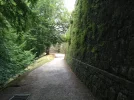what am i missing here?
i have an iPhone 6 and have been looking at my pictures and seeing their limitations.
I am hesitant to depend on it for my photojournalistic memories
i am NOT a good photographer!
but the lightest digital with some zoom that i can find is 10.4 oz (294 gm)
All you lovers of iPhone to save weight- how are you getting decent photos of people and distance landscape
and when i have received copies of papers on my phone they are usually illegiblly small- so how do yo have copies of guide pages etc to review?
obviously iphone 101 dunce here
Nanc
Hi Nanc,
I have an iPhone 6S. Great camera but I took a serious camera with me on my Camino. I did use the iPhone camera a few times - especially for panoramas. The panorama function is remarkable. You end up with a very large file and therefore a lot of detail. The panorama software somehow isolates sharp pictures of moving people while you move the phone to 'pan' through the superwide image.
All those amazingly brilliant published pictures you've seen which were taken on phones were taken by very skilled photographers and/or they were chosen from among thousands of photos. And they were probably post-processed, that is, modified with very sophisticated software to get the absolute best out of the image. This is not cheating but it isn't just the original image either. There's software built into the phone camera to get it to adjust to the lighting conditions. Interiors shot on a phone camera look better because the tonal range is easier for the camera to manage - similar to shots taken outside in the shade. You'll notice that all those brilliant published photos are almost all shot in lowish light or unusual light - sunset, sunrise, interiors, artificial light, etc. If you shoot all your exterior daylight Camino shots on a phone you're asking it to do what it's least best suited for, IMHO.
To get the best results with the iPhone camera you just have to use the basic rules of photography: Try to keep the sun behind you, if you shoot towards the sun it will probably effect the exposure. Try to avoid harsh bright sunlight on close objects (especially people, faces) because the shadows will be too dark for the camera to manage pleasingly. So try to shoot people in the shade or filtered sunlight - the colours will be richer and the shadows will be softer. As jozero says, don't zoom because a digital zoom just enlarges the picture and it goes soft and mushy. If you must shoot towards the light, position yourself in a bit of shadow to keep bright light from falling across the lens. I sometimes shade my camera with my hat - tricky with a phone, though. Also try to avoid backlit people, that is people silhouetted against bright light, such as a window.
Try playing with the 'edit' functions on your phone. View the picture and before you tap on it to enlarge it or see it against black, you will see the word 'edit' in the upper right. Tap that. You can modify the contrast, exposure, colour saturation of your shot after it's done. You can also convert to black and white. Have a play. No serious photographer ever uses the original unimproved shot - they are ALL modified if sometimes just a wee bit.
If you shoot a document for future reference, just make sure you hold the camera flat on to the paper/sign/whatever and be very careful focusing. when you refer back to the pic you can zoom up quite a lot as there's quite a lot of detail in an iPhone 6 file. I often do this on labels - especially wine labels. You can hold the phone steadier if you hold it close to your body, don't extend your arms. Hold your elbows tight to your sides if you can. And hold your breath.
I'll bet there are LOTS of videos on YouTube as jozero said.
Mike











